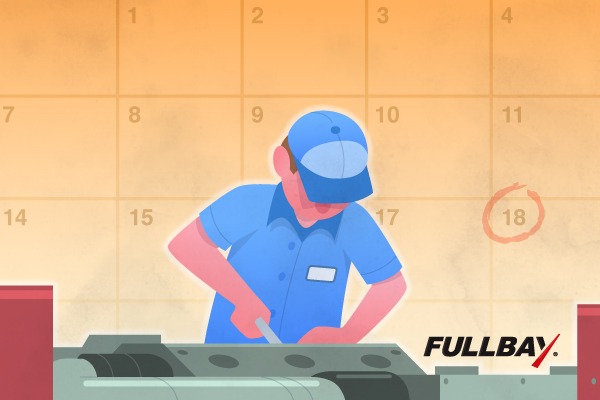Predictive Maintenance

Your truck belongs out on the road, doing its job and making you money.
To do that, of course, you need to take care of it. Fuel, a good driver, routine stops at the shop for preventive maintenance — these are all things you, the owner or fleet manager, need to keep on top of to ensure the vehicles remain busy and profitable.
But there’s another element of maintenance we’d like to get into today. You can think of it as preventive maintenance’s slightly younger, rather nerdy sibling: predictive maintenance.
What is predictive maintenance, anyway?
If preventive maintenance helps you figure out and stop what’s going wrong before they go badly wrong, then predictive maintenance takes it a step further. It’s basically looking into a crystal ball and foretelling what needs to be replaced or repaired before it even breaks.
“But wait,” you’re saying. “That’s sorcery!”
No, not exactly.
That’s science.
Predictive maintenance elaborates on and exists alongside preventive maintenance. Preventive maintenance happens on a schedule; you bring your truck in at regular intervals and replace parts that need replacing and your truck stays on the road much longer. Predictive maintenance takes this one step further by drawing on data to estimate when things will go wrong, instead of just replacing parts that show wear or scheduling regular maintenance.
How does it work?
Predictive maintenance isn’t an exact science — yet. If we break it down to its basic components, it’s making an educated guess about when truck parts are likely to fail. At the very least you need historical data to make that educated guess; if you really want to predict things accurately, you can also factor in data from manufacturers and other trucks of that make and model — data that tells you when parts have worn out or been replaced.
Here’s an example: If six 2019 trucks from XYZ company have all needed their rear left axles replaced when they hit 20,000 miles, it’s probably a good bet that the seventh truck, which is nearing 19,000 miles, will need that axle replaced shortly. Maybe you should even do it now so it doesn’t fail during a haul.
Pretty cool, huh? It’s not exactly a crystal ball, but it’s getting close.
Can you prevent and predict?
In the best of both worlds, preventive and predictive maintenance work together to keep your truck or your fleet on the road and out of harm’s way. You bring your truck into the shop for its preventive maintenance, which includes oil changes, scheduled swapping of parts, and general checks. Your predictive maintenance isn’t usually scheduled — you’ll be alerted to a potential predictive maintenance task when it comes up.
But when does that happen?
We’re so glad you asked!
Maintenance and repair records are absolutely vital to predictive maintenance.
You can probably see where we’re going with this…
Fullbay and predictive maintenance
Fullbay keeps track of all the maintenance each vehicle (or each fleet) incurs. It records what repairs are made and what parts are ordered for each make and model, and at what mileage that replacement occurred — and all that data helps your mechanic predict when a mechanical failure may be on the horizon. You may even be able to take care of them during your trip to the shop for regular preventive maintenance!
No, it’s not quite a crystal ball, but we’re always adding new features and developing new ways to make maintenance — and by extension running a shop — easier and less expensive. Check out our free demo and see how Fullbay can help you cruise into the future of repair.

